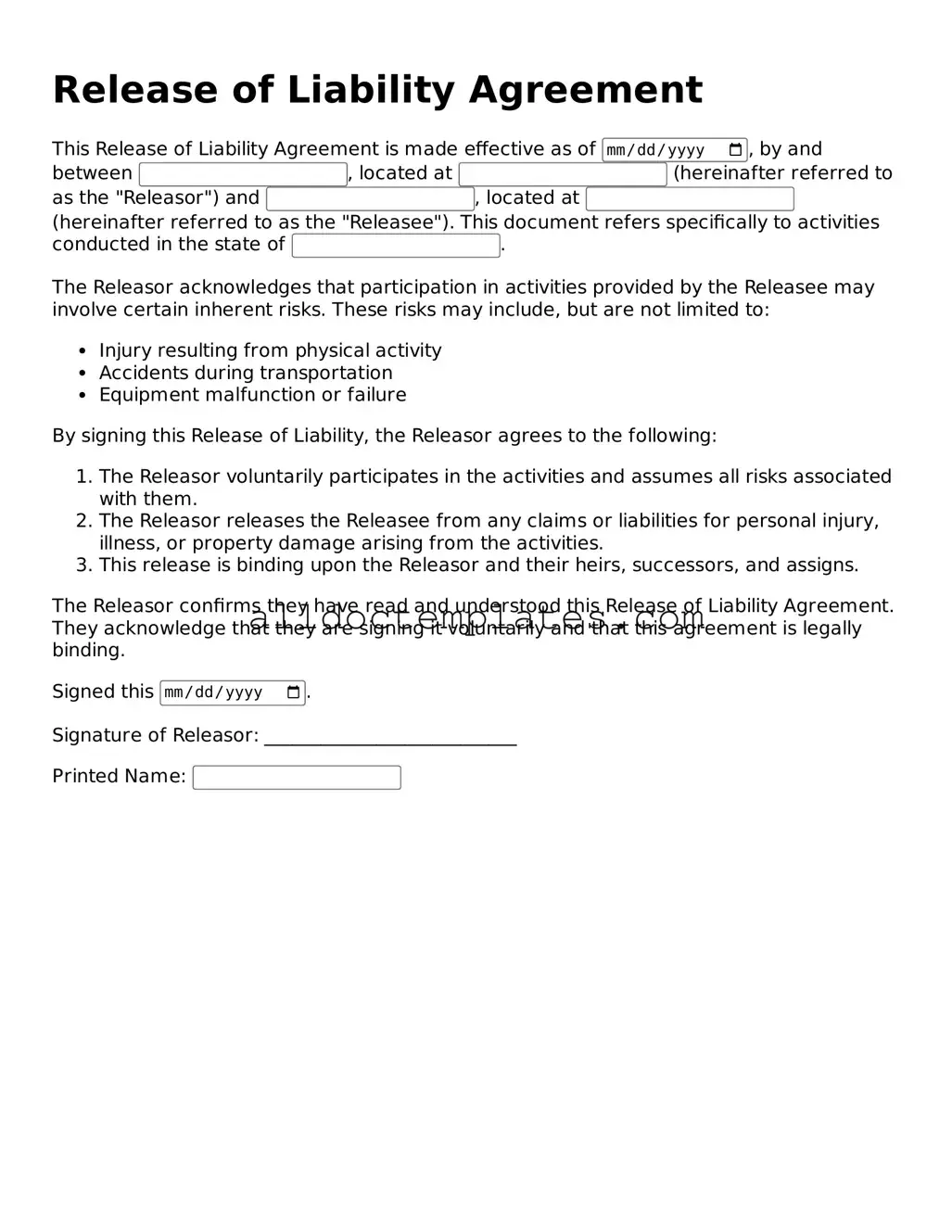Valid Release of Liability Template
A Release of Liability form is a legal document that protects one party from being held liable for potential injuries or damages that may occur during an activity. By signing this form, individuals acknowledge the risks involved and agree not to pursue legal action against the party providing the activity. This form is commonly used in various settings, including sports, recreational activities, and events.
Get Your Form Now
